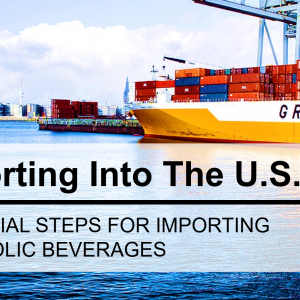“I never lose. I either win or learn.” –Nelson Mandela
It’s rare for everything to go as planned during your beverage’s first production run. Even after helping to manage thousands of first production runs for beverage brands around the world, we are still learning every day. While experience is often the best teacher, not every lesson needs to be learned through trial and error. Here are five common mistakes we see newcomers make as they enter the beverage industry.
1. Underestimating the science of batching and scaling
Converting your kitchen recipe into a scalable, viable commercial formula is not as simple as doubling a cookie recipe. Ingredient ratios, dilutions, and concentrations become much more complicated as you scale from one gallon to 1000 gallons. In addition, using ingredients in larger quantities can affect how they behave. Not correctly scaling your formula can result in:
- Poor product quality
- Spillage, foaming, and liquid loss
- Damage to machines and equipment
Working with an experienced beverage formulator can help you scale your beverage recipe properly. Building a pilot run into your timeline and budget can further reduce the risk and guesswork.
2. Assuming all co-packing facilities are the same
Don’t assume that a process or test will be performed the same way across facilities or that the results will be of the same quality. Be sure to have a basic understanding of your manufacturing processes and necessary quality checks to produce your beverage consistently. Ask questions of the facility you will use and vet their reputation to uncover any known quality issues. Don’t be afraid to collect samples to send out to a third party for additional testing and verification. It is your brand and reputation on the line if your product hits the shelves with a quality issue that affects your flavor profile, or worse, a recall due to a health/safety concern.
The best solution is to get a process authority for your formula and processing method. A process authority shares the recommended process so that a facility can achieve the preservation and safety protocols your beverage requires. Investing in a process authority can be costly, but it ultimately allows you to hold all parties accountable for following the processing method instructions.
3. Losing track of your inventory
Not tracking and reconciling your inventory for both finished goods and ingredients regularly leaves you open to overlooking issues and mistakes that can cost your business. A simple miscount or mis-categorization can throw your numbers off and leave you unprepared to meet customer demands. Tracking your inventory also alerts you to any discrepancies with a facility or vendor who may not be following best practices.
Track and validate inventory every month to see product movements, prepare accurate forecasts, and respond to demand. When things don’t line up, you will have the numbers to start a straight forward, data-backed discussion with the appropriate parties to clear up any issues. When you’re onsite for a production run, consider performing a manual audit if the facility will allow it.
4. Disregarding the nuances of packaging
Even when you are working with the most experienced package designers and co-packers, there is a lot of room for product packaging issues. The list of potential problems is endless…
- Wrong ends being put on the wrong cans
- The incorrect liquid being put into your primary packaging
- UPC labels flip-flopped between products
- Incorrectly assembled boxes
And the list goes on.
Check the artwork on ALL your packaging, from primary to tertiary. Whenever changes are made, recheck it. There are so many critical points during packaging manufacturing and beverage production that can cause mix-ups during design, printing, or assembly. So check that everything is in order as often as you can. Be prepared with backup plans and ideas for how you could adjust or quickly source additional packaging if you encounter any issues.
5. Not staying engaged and proactive
You can’t anticipate everything that might slow or halt your beverage launch timeline. But the best thing you can do is stay engaged in the process. Research and learn as much as you can. Rely on the experience and guidance of trusted partners and vendors. Ask questions and communicate regularly. And when you do run into trouble, stay calm, analyze your options, and focus on proactive solutions. The biggest mistake you can make is giving up.


